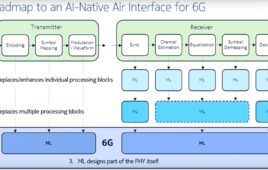NASA scientists and satellite data analysts have been working daily for the last two weeks to produce maps and damage assessments to assist disaster managers battling the Woolsey Fire near Los Angeles and the Camp Fire in Northern California. A research aircraft was also deployed over the Woolsey Fire November 15 in order “to identify burned areas at risk of mudslides in advance of winter rains expected in the area,” according to NASA.
NASA’s Disasters Program team, in the Earth Science Division, “produces a variety of data products largely derived from satellite observations, including maps showing the locations of active fires, damage caused by fires, and burned areas that are susceptible to landslides and mudslides.”
The products are then distributed to the various agencies working on the ground in California that have been working tirelessly to extinguish the flames. Some of the agencies include the state National Guard, the Department of Forestry and Fire Protection (Cal Fire), the California Earthquake Clearinghouse, the Governor’s Office of Emergency Services, and the Federal Emergency Management Agency (FEMA).
According to NASA, their Disasters Program “mobilizes for intensive risk events globally, including earthquakes, wildfires, floods, and severe weather. The program capitalizes on the wealth of environmental data gathered by Earth-observing satellites and other remote-sensing technology to help emergency response managers prepare for, respond to, and recover from disasters. In 2017, the program responded to 89 events.”
David Green, manager of the Disasters Program at the NASA Headquarters in Washington, D.C. says, “When disasters occur, our researchers become providers and distributors of images, data, and damage assessments.” Also adding, “We draw on NASA’s technical expertise and strong relationships with our partner organizations to provide useful products to disaster managers.”
The information is then posted to a “geographic information system (GIS)-based Disasters Mapping Portal so that datasets can be adapted by response agencies to meet their specific needs.”
In addition, the NASA team also responds to agency requests for specific information, such as identifying particular risk areas where wildfires are “close to critical infrastructure,” to assist with prioritizing response targets.
According to NASA, “The Advanced Rapid Imaging and Analysis (ARIA) team at NASA’s Jet Propulsion Laboratory in Pasadena, Calif., quickly turned around a new ‘damage proxy map’ derived from synthetic aperture radar images from European satellites. The GIS team, in turn, made the data more user-friendly so that California officials could identify how close the most severely damaged areas were to critical infrastructure like bridges and cellphone towers.”
And it helped. According to NASA’s website, Phil Beilin, an information technology lead for the Earthquake Clearinghouse, explained that the NASA products provided data that was extremely helpful in their response efforts. With the aid of a “standard online analysis tool, he was able to filter data from the damage proxy map to see the distance to critical infrastructure, such as a water treatment plant near the Woolsey Fire.” The data was also shared with the California Office of Emergency Services, Cal Fire, the California Environmental Protection Agency (CalEPA), and the California National Guard.
And that’s not all. In response to the California fires, NASA’s mobilization efforts also involved deploying a research aircraft November 15 for a “nighttime flight” over the Woolsey Fire. (It was during the night in attempts to stay out of the way of firefighting aircraft in the area.) “The NASA C-20 aircraft carried sensors to map the fire scar, with a goal of identifying areas at risk of catastrophic mudslides in the coming winter rains.”
According to NASA, “The aircraft took off from its base at NASA’s Armstrong Flight Research Center in Palmdale, Calif., carrying the Uninhabited Aerial Vehicle Synthetic Aperture Radar (UAVSAR), developed and operated by JPL. The instrument can ‘see’ through smoke, clouds, and the dark of night.”
Scientists often use UAVSAR data “to map ground elevation beneath the aircraft to study tectonic motion, but they can also be processed to map fire scars. The radar signals bounce off burned, barren terrain differently than they do from unburned, brush-covered hillsides.”
Also according to NASA, “The resulting UAVSAR image of the 150-square-mi. (241-square-km) fire area shows the fire scar, including where vegetation has burned off steep slopes, destabilizing them and increasing the potential for mud and debris flows. With rain in the forecast, this information is timely. Debris flows triggered by rainstorms after fires sometimes claim more lives than the fires themselves, as happened after last year’s Thomas Fire in Montecito, about 40 mi west of the Woolsey Fire.”
The Disasters Program team shares the UAVSAR data with agencies including Cal Fire, The U.S. Geological Survey, U.S. Forest Service, and the National Park Service.
To find updates on NASA’s response to the California fires, click here.




